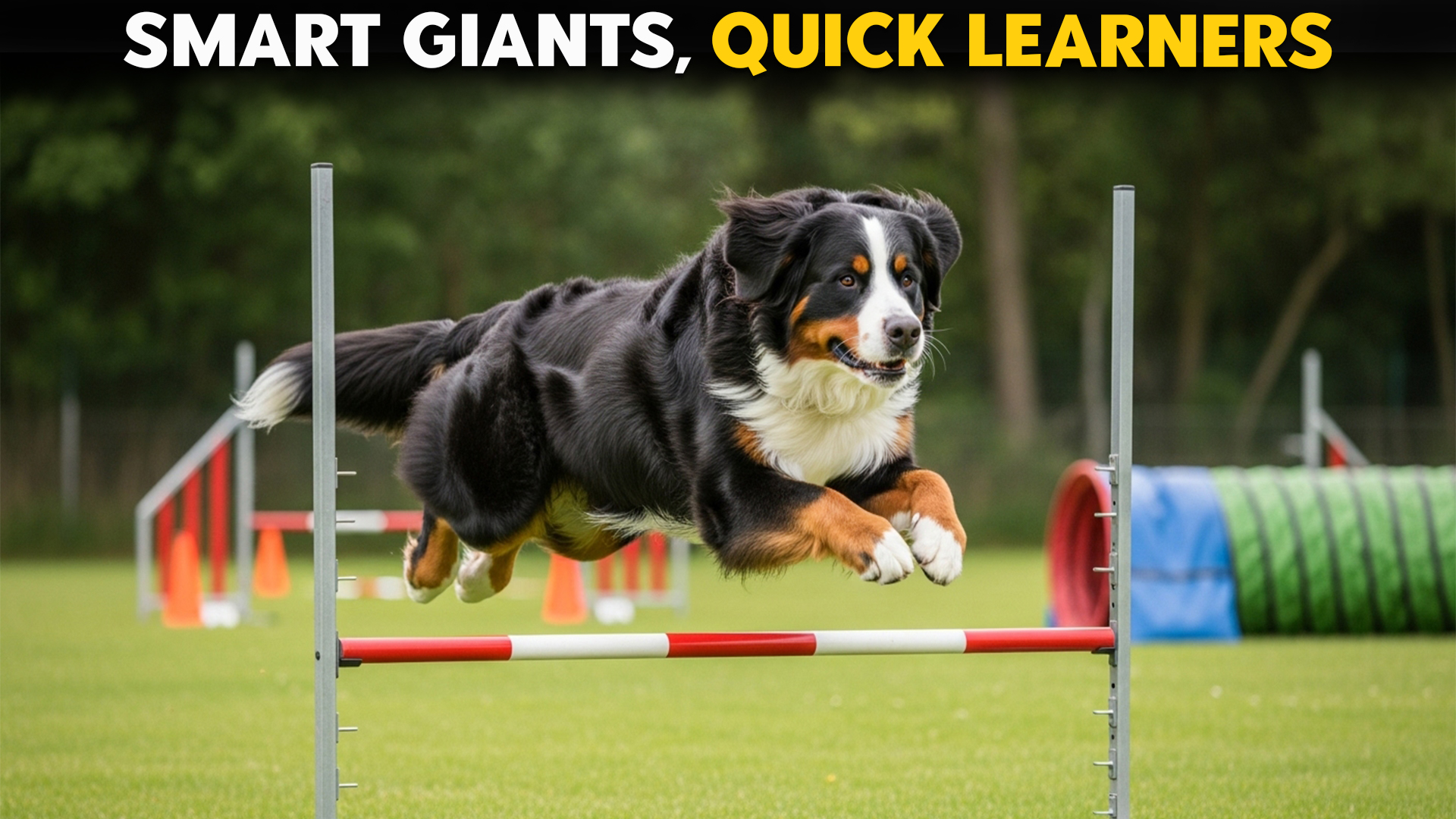Ever met a dog so big it feels like hugging a friendly bear, and then it tilts its head as if it’s solving a puzzle? Giant dog breeds aren’t just impressive in size; many are also seriously smart. In fact, a 2019 study in Animal Cognition found that dogs with larger brains tend to score higher on memory and self-control tests, two superpowers that make training a whole lot easier.
These oversized geniuses might look intimidating, but behind those massive paws is often a quick thinker who loves to please. Whether you’re teaching basic commands, fun tricks, or polite leash manners, big dogs can surprise you with how fast they catch on (and how hard they try to make you smile).
So, if you’re dreaming of a furry best friend who’s both brawny and brainy, you’re in for a treat, let’s meet the gentle giants that ace obedience school!
Smartest Giant Dog Breeds Perfect for Training
1. Bernese Mountain Dog
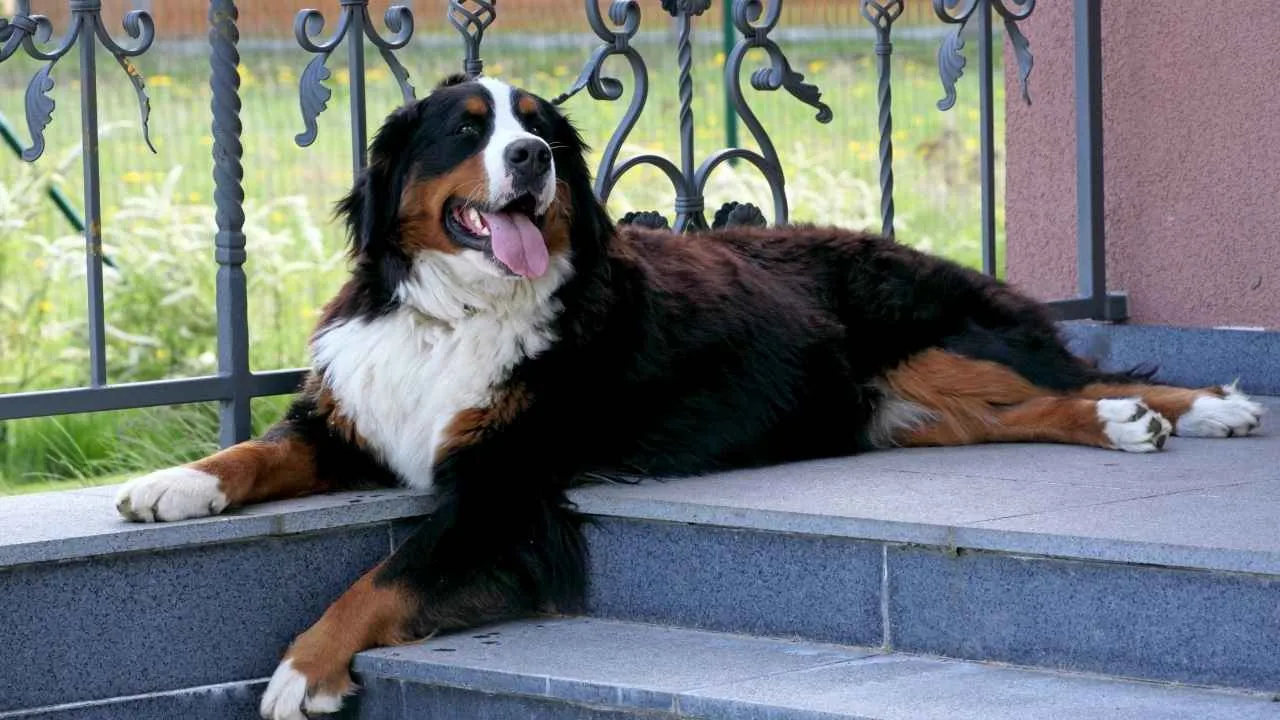
The Bernese Mountain Dog is a gentle powerhouse of both muscle and mind. Originally bred in the Swiss Alps to herd cattle and pull carts, they developed sharp problem-solving skills and an eagerness to work closely with people.
Their strong memory and intuitive nature help them pick up patterns quickly, making them ideal for families who enjoy interactive training.
According to Orvis, Berners love having a “job,” whether it’s obedience practice, agility, or simply learning new tricks. Their focus and calm temperament mean they absorb lessons steadily, thriving on structure and positive reinforcement.
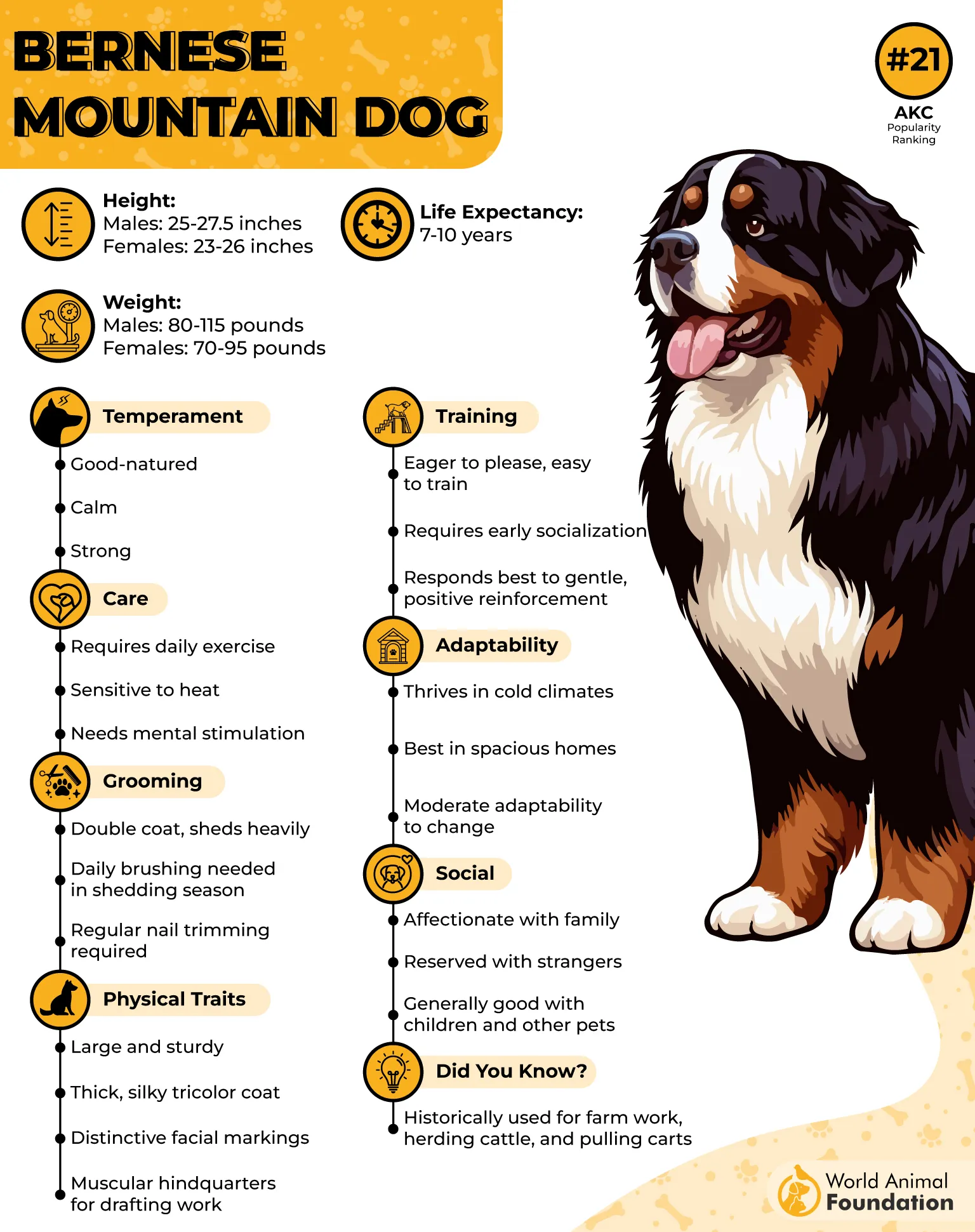
Because they’re sensitive, they do best with patient guidance. Yelling or harsh corrections can shut them down, while encouragement brings out their curiosity and confidence. Treats, praise, and clear routines make training feel like teamwork.
These dogs also excel at reading emotions. They’re quick to sense tone and body language, often adjusting behavior to please their people. That emotional intelligence is part of what makes them so deeply loyal and gentle.
When their minds are engaged, Berners blossom into calm, cooperative companions. They learn best in short, fun sessions that reward effort and consistency, perfect for owners who value brains as much as brawn.
Quick Tips
Use positive reinforcement; they respond best to kindness.
Rotate learning activities to challenge their mind.
Keep lessons short and upbeat for maximum focus.
2. Leonberger
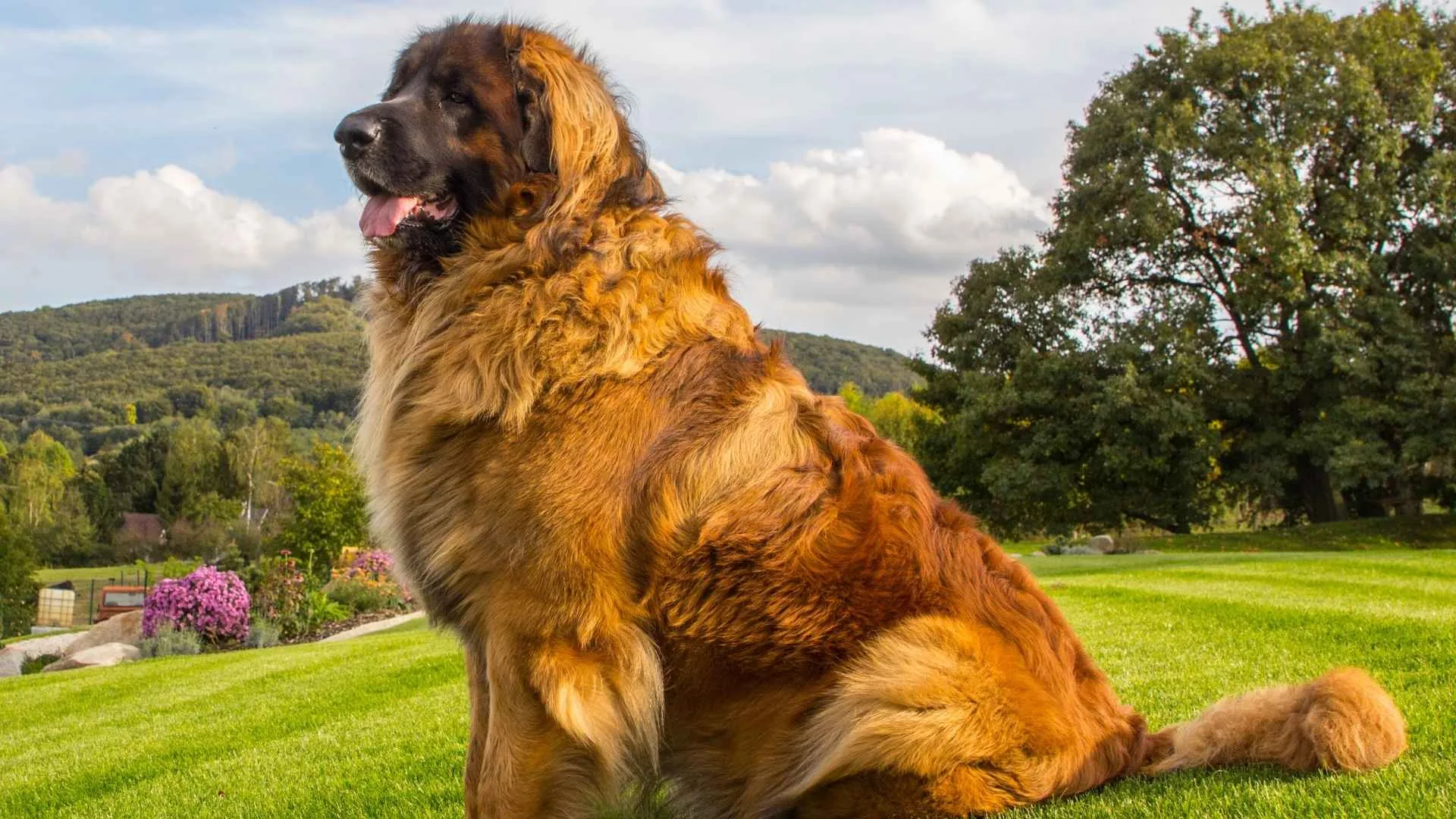
Beneath the Leonberger’s lion-like mane lies a sharp, intuitive thinker. Bred as versatile working dogs in 19th-century Germany, they were prized for their ability to learn quickly and adapt to different roles, from pulling carts to offering therapy.
Their even temperament and problem-solving skills make them eager students when training is consistent and engaging.
Leonbergers thrive when tasks stimulate both body and mind. Their intelligence leans toward emotional awareness; they often mirror their owner’s mood and adjust accordingly. This makes them wonderfully responsive to calm, confident trainers.
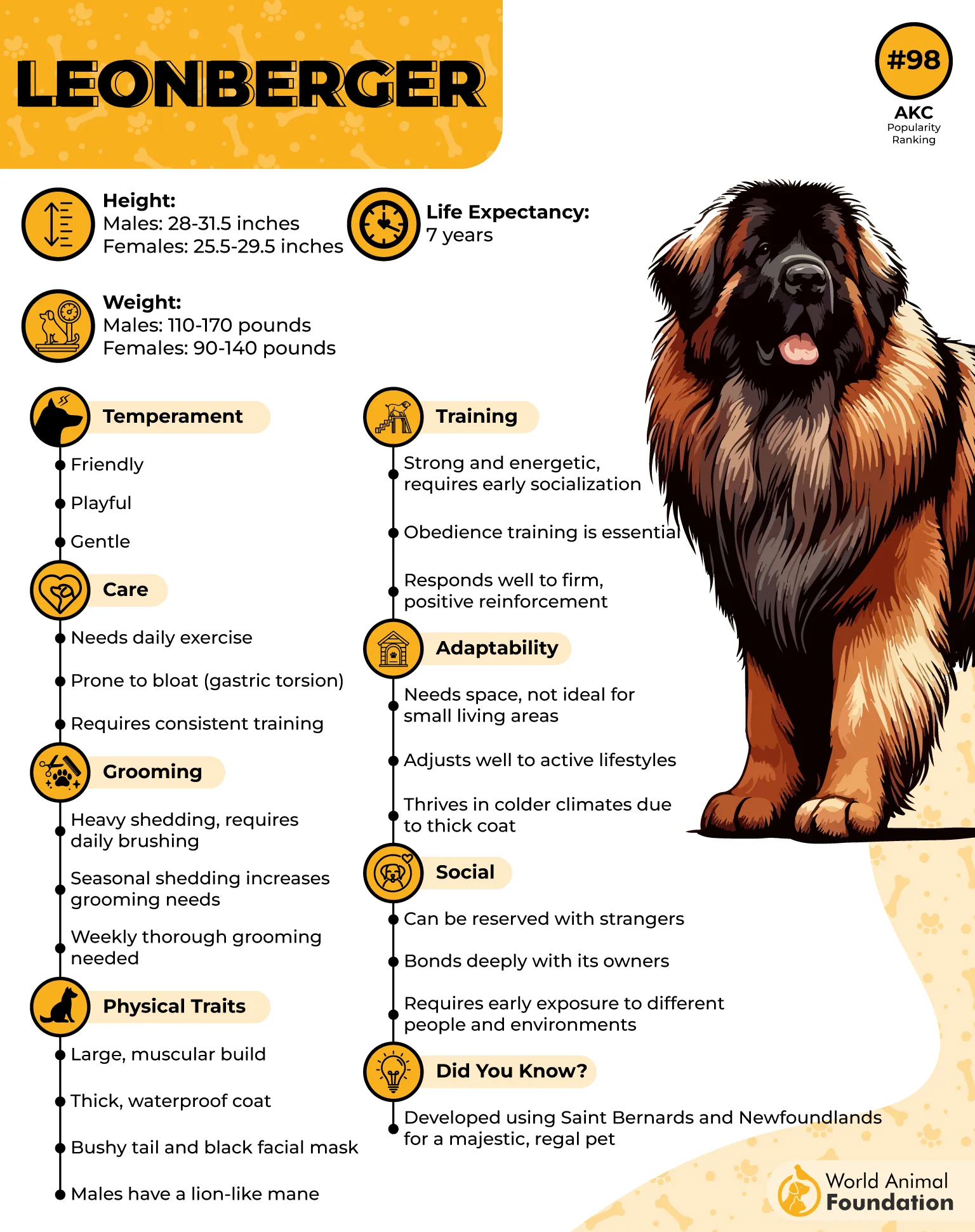
They’re not pushovers, though—clear boundaries are key. Once they understand expectations, they show remarkable memory retention and obedience. Repetitive drills can bore them, so mixing in puzzles, scent work, or outdoor challenges keeps things interesting.
This breed learns best through collaboration, not dominance. They like feeling part of a team and excel when communication is gentle but firm. With early socialization, they grow into steady, well-mannered companions, as noted by the AKC.
Their intelligence, paired with patience, makes them a great fit for owners who enjoy training as a bonding experience. A Leonberger that feels mentally fulfilled becomes a devoted, intuitive family member.
Quick Tips
Alternate between physical and mental exercises.
Introduce commands early—consistency builds confidence.
Use calm authority; they respond to balanced energy.
3. Newfoundland

Newfoundlands may look like gentle teddy bears, but behind those soulful eyes is a dog with remarkable instinct and insight.
Their history as water rescue dogs demanded sharp decision-making and the ability to act independently. That legacy still shows today—they often anticipate what’s needed before being told.
Their intelligence is practical and empathetic. Newfies read human emotion with uncanny accuracy, making them natural therapy dogs. This emotional depth also makes training smoother when it’s framed as teamwork rather than strict obedience.
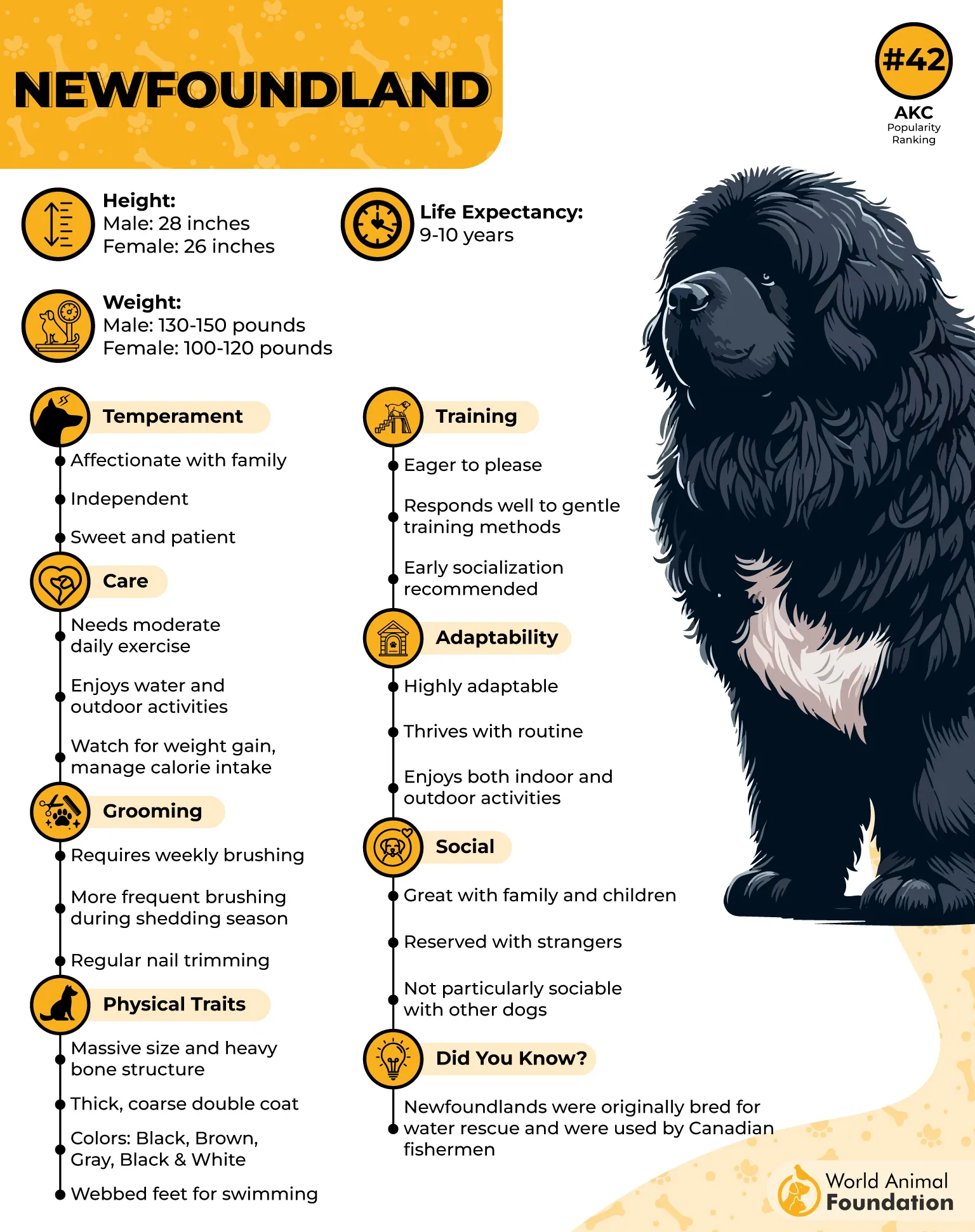
They learn steadily rather than quickly, but once they’ve mastered a skill, they rarely forget it. Repetition combined with reward builds confidence and reliability. A calm tone and positive cues work wonders with this breed.
Problem-solving comes naturally to them, especially in water or rescue-type tasks. Their instinct to assist is part of their charm, turning training into partnership. Keep sessions short and varied to prevent boredom.
For families seeking a big, smart dog that responds to gentle teaching, the Newfoundland delivers. With patience and trust, they reveal deep intelligence wrapped in kindness.
Quick Tips
Encourage independent thinking through gentle challenges.
Reinforce learned commands regularly for long-term memory.
Praise often; they thrive on encouragement.
4. Tibetan Mastiff
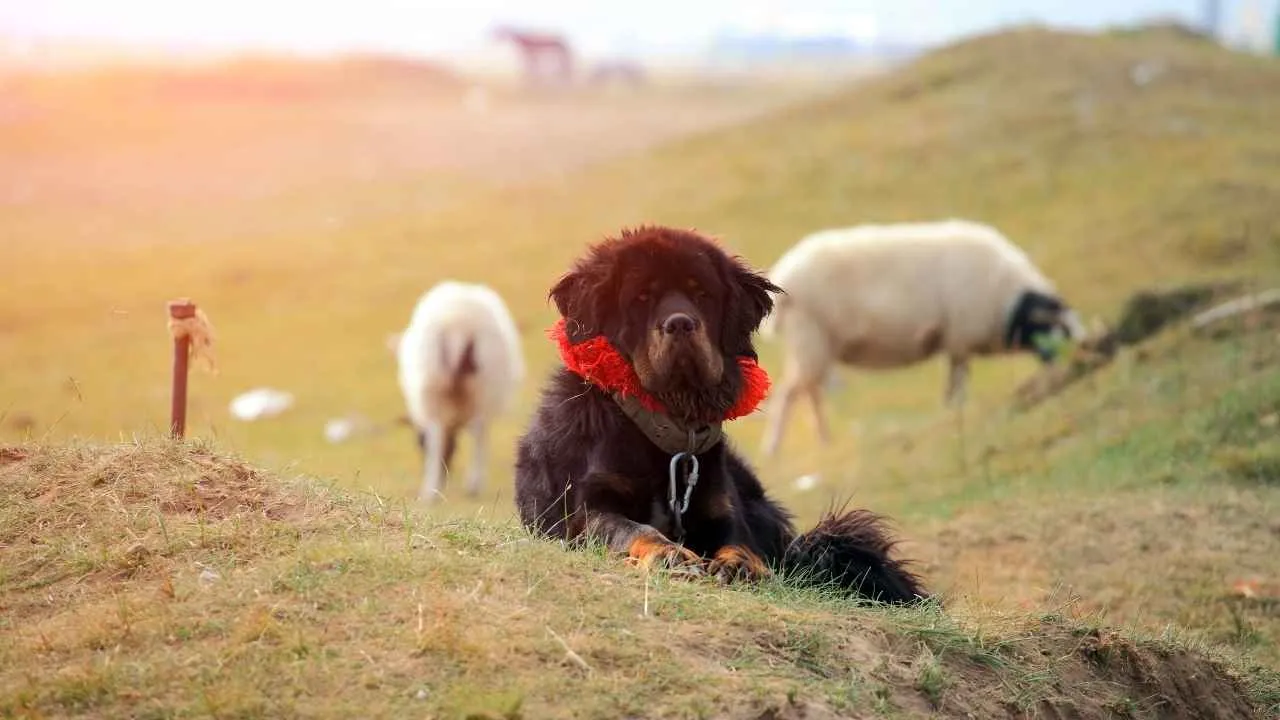
The Tibetan Mastiff’s intelligence runs deep, shaped by centuries of guarding Himalayan monasteries. These dogs were bred to think for themselves, weighing threats and acting independently—skills that demand respect and patient training. Their minds are sharp, analytical, and often one step ahead.
They’re quick to learn routines and boundaries, but they question inconsistency. Short, focused lessons help them stay engaged without triggering stubbornness. Because they value trust, building a strong bond early makes them more willing learners.
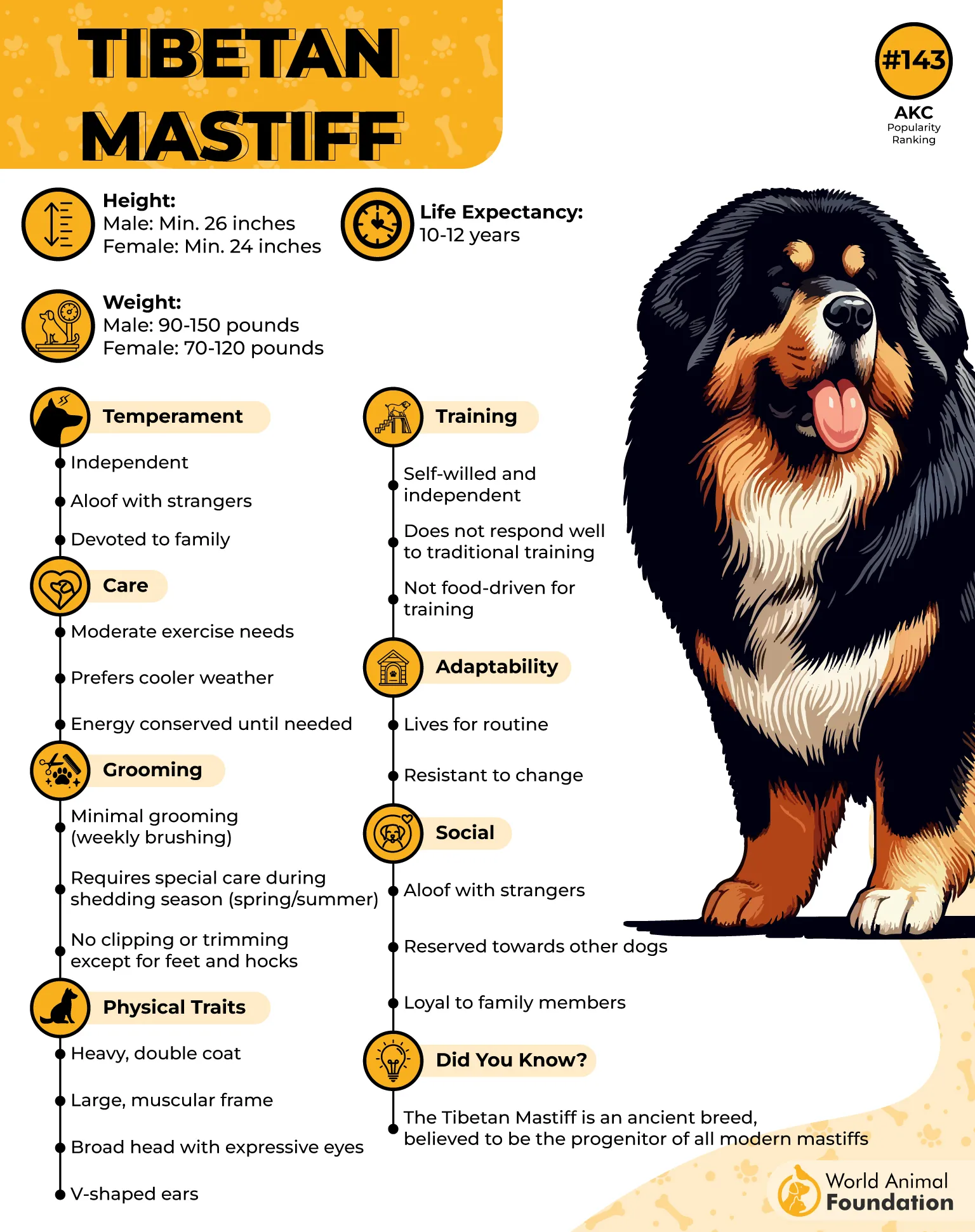
Unlike more eager-to-please breeds, Tibetan Mastiffs need a reason to cooperate. They respect confident leaders who use calm, steady direction. Once they understand why a task matters, they commit fully and remember it long-term.
PDSA states that mental stimulation is vital for this breed. Puzzle toys, scent trails, and structured play sessions help channel their sharp minds. A bored Mastiff might test limits, but a challenged one becomes calm and centered.
This ancient guardian rewards patience with loyalty and wisdom. Their intelligence is best nurtured through consistency, respect, and understanding rather than force.
Quick Tips
Use firm consistency; they notice every detail.
Build trust before expecting obedience.
Offer puzzle toys and problem-solving games.
5. Giant Schnauzer
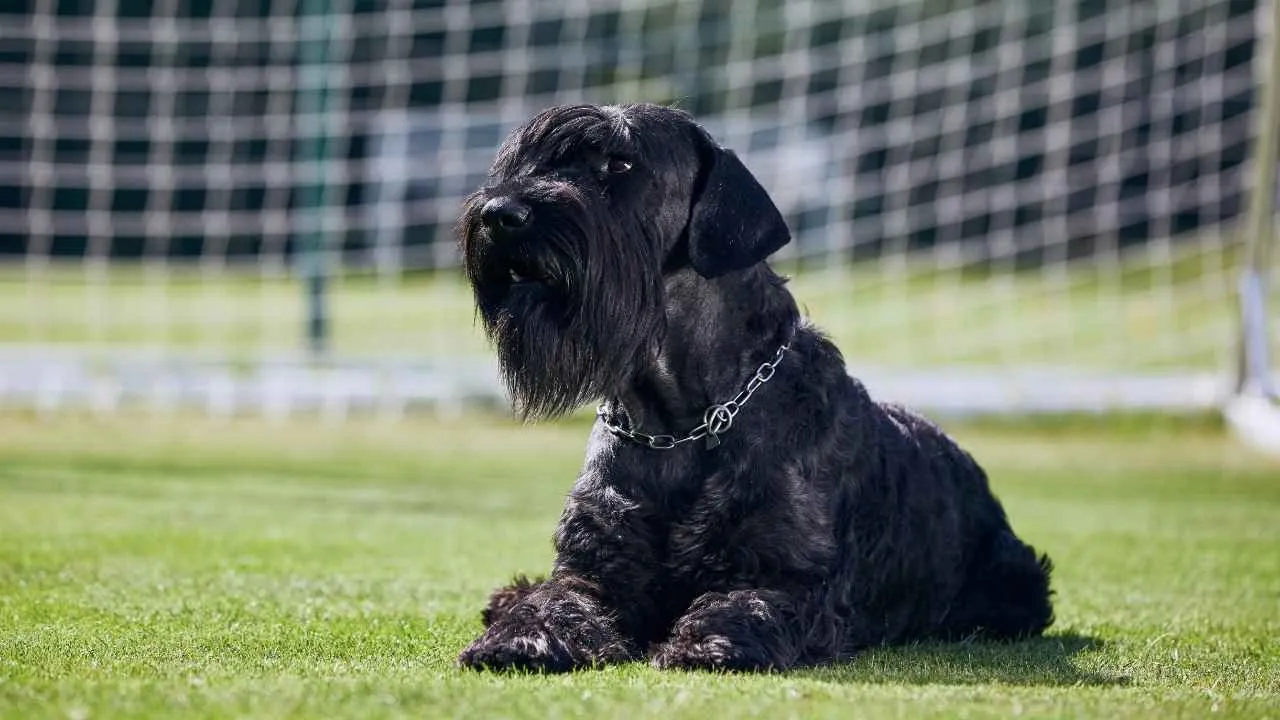
The Giant Schnauzer is a powerhouse of energy and intellect. Originally bred in Germany to drive cattle and guard property, this breed developed sharp focus and a keen ability to read its handler’s cues. Their strong memory and quick thinking make them stars in obedience, agility, and even police work.
Their intelligence can be both a gift and a challenge. These dogs are problem-solvers who thrive on mental stimulation; if left bored, they’ll invent their own “projects.” Mixing structured lessons with play keeps their agile minds satisfied and behavior polished.
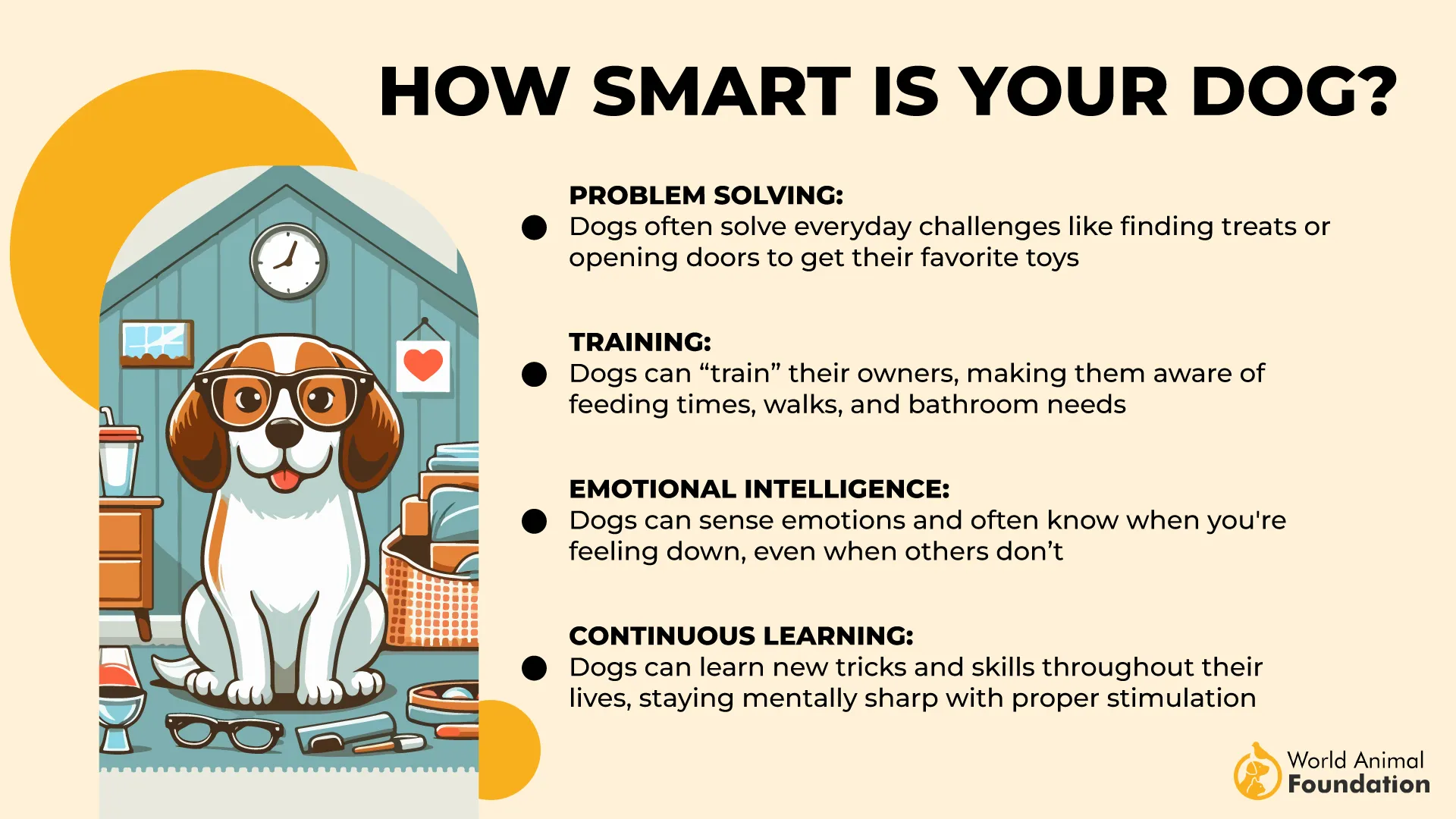
Because they’re naturally protective, Giant Schnauzers benefit from early, consistent training that builds trust and direction. They respond best to clear communication and steady leadership. Positive reinforcement fuels their motivation, especially when paired with plenty of exercise.
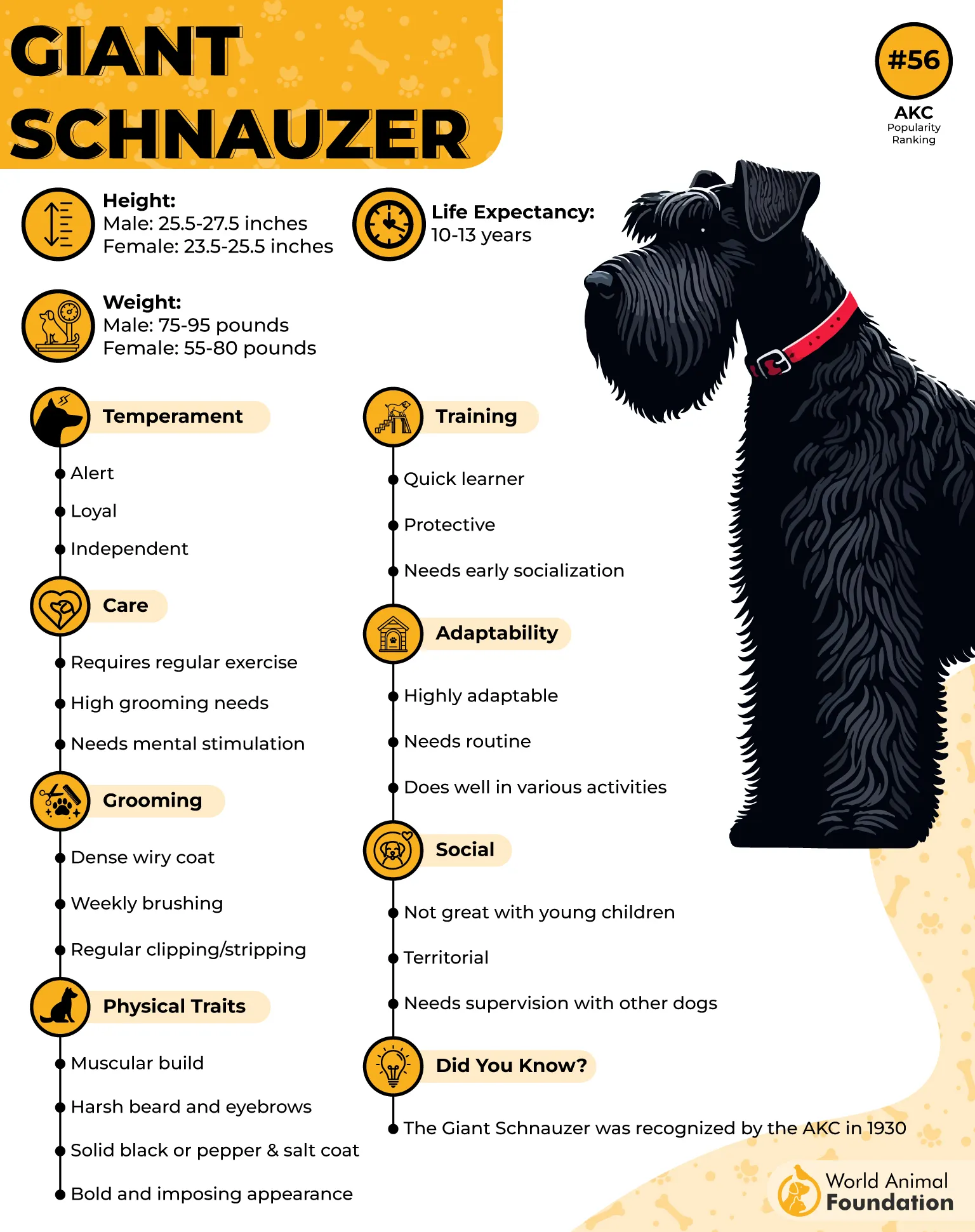
As per PetMD, they form deep bonds with their families and love teamwork. Once they understand expectations, they carry them out with impressive precision and enthusiasm. Their loyalty, paired with wit, makes them ideal for active households that enjoy ongoing training challenges.
With the right balance of mental workouts and affection, this breed shines as one of the smartest and most disciplined giants around. Their brilliance blossoms under structure, patience, and a sense of purpose.
Quick Tips
Combine daily exercise with puzzle-based training.
Start obedience early to channel protective instincts.
Reward focus and consistency with praise and play.
6. Saint Bernard
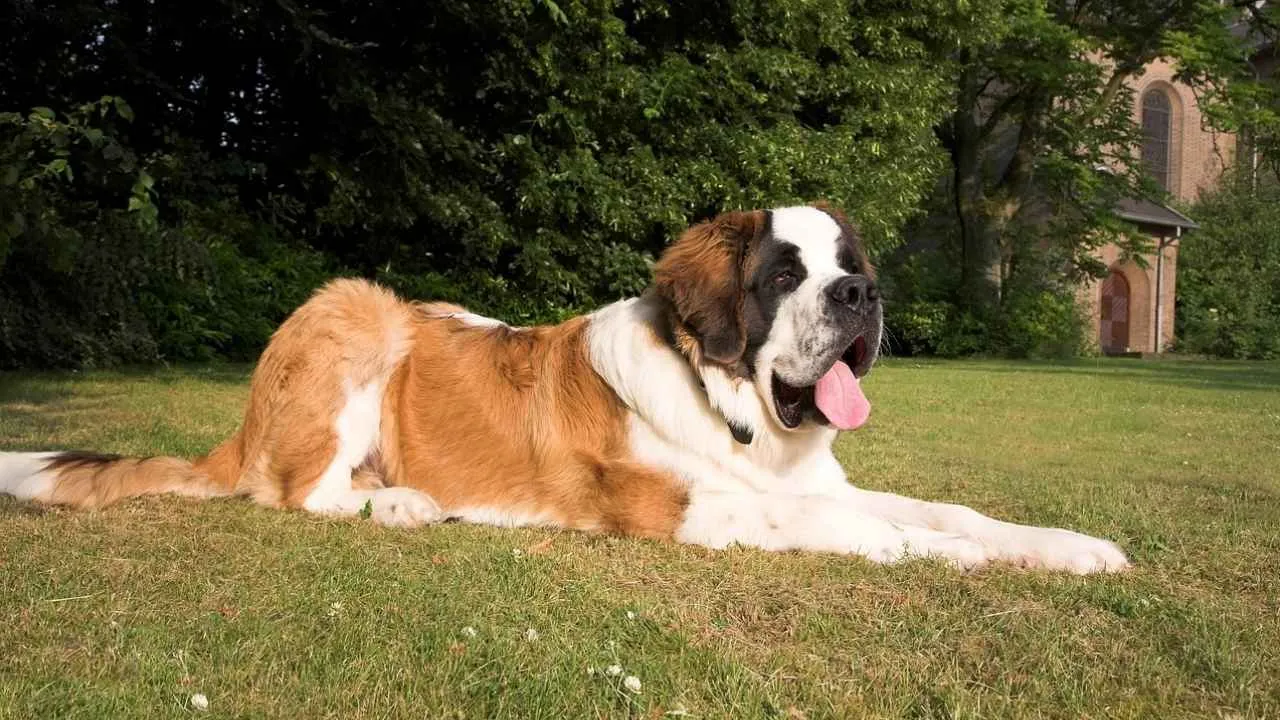
Saint Bernards are gentle geniuses wrapped in fluffy coats. Originally bred by monks to locate lost travelers in the snowy Alps, their problem-solving skills and strong sense of direction became legendary. Today, those same instincts make them intuitive, empathetic companions who learn through observation and consistency.
Their intelligence is steady and emotionally tuned. They quickly recognize patterns, like daily routines or commands paired with tone. Because they’re sensitive and people-oriented, soft guidance works far better than strict correction.
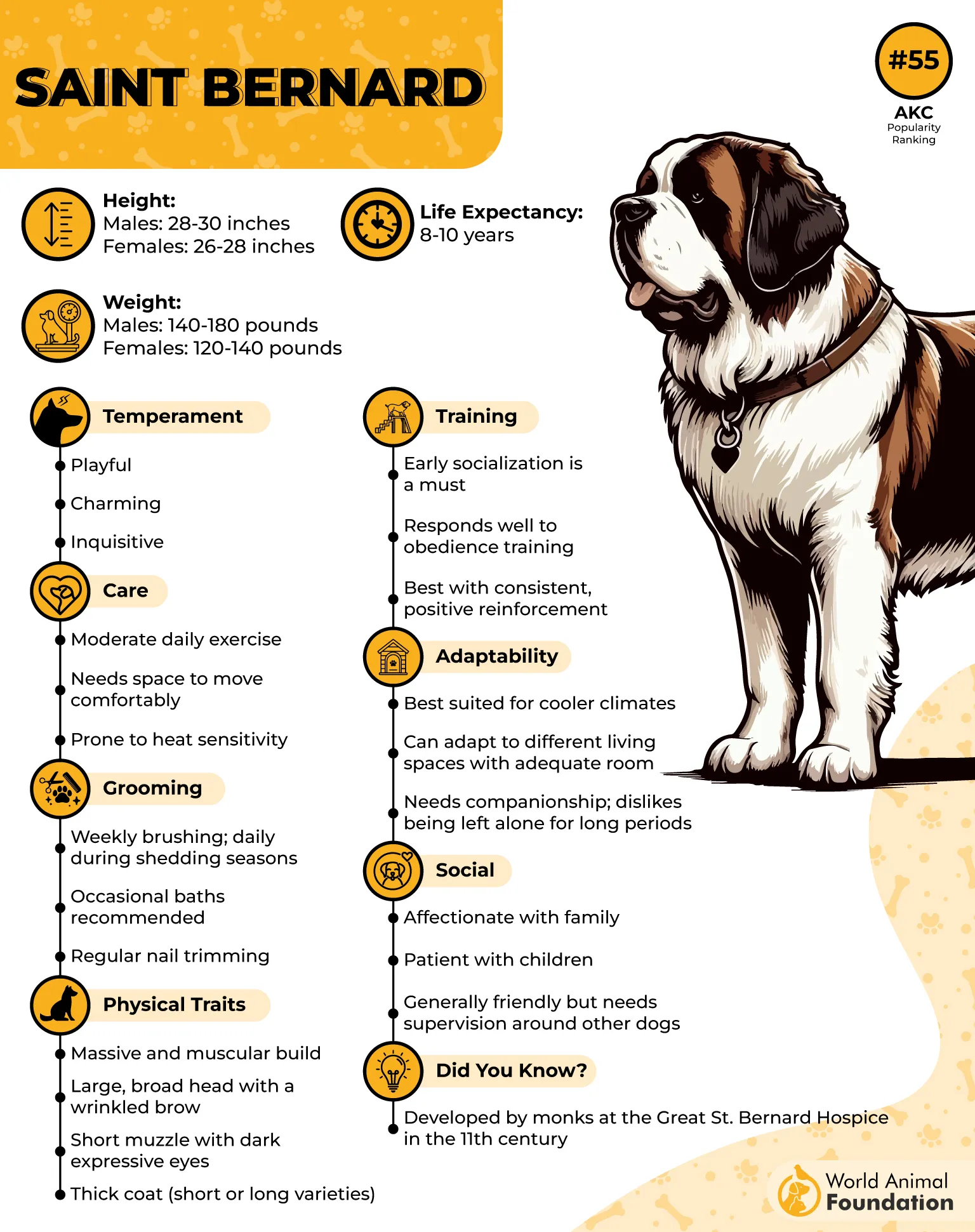
Saint Bernards learn at their own pace but retain lessons deeply once mastered. Patience is key—they may take a moment to process new tasks, but repay it with long-term reliability. Clear, simple commands and consistent rewards keep them engaged.
Socialization helps shape their natural kindness into confidence. When they understand expectations early, they grow into calm, trustworthy family members who respond beautifully to structure. Their thoughtful nature makes them excellent therapy or rescue candidates.
A well-trained Saint Bernard blends heart with brains—loyal, loving, and quietly clever. With positive methods and gentle leadership, they’ll show just how wise a giant can be.
Quick Tips
Keep lessons short and encouraging to sustain interest.
Use soft commands—harsh tones can discourage them.
Reinforce learned cues regularly for lasting success.
7. Cane Corso
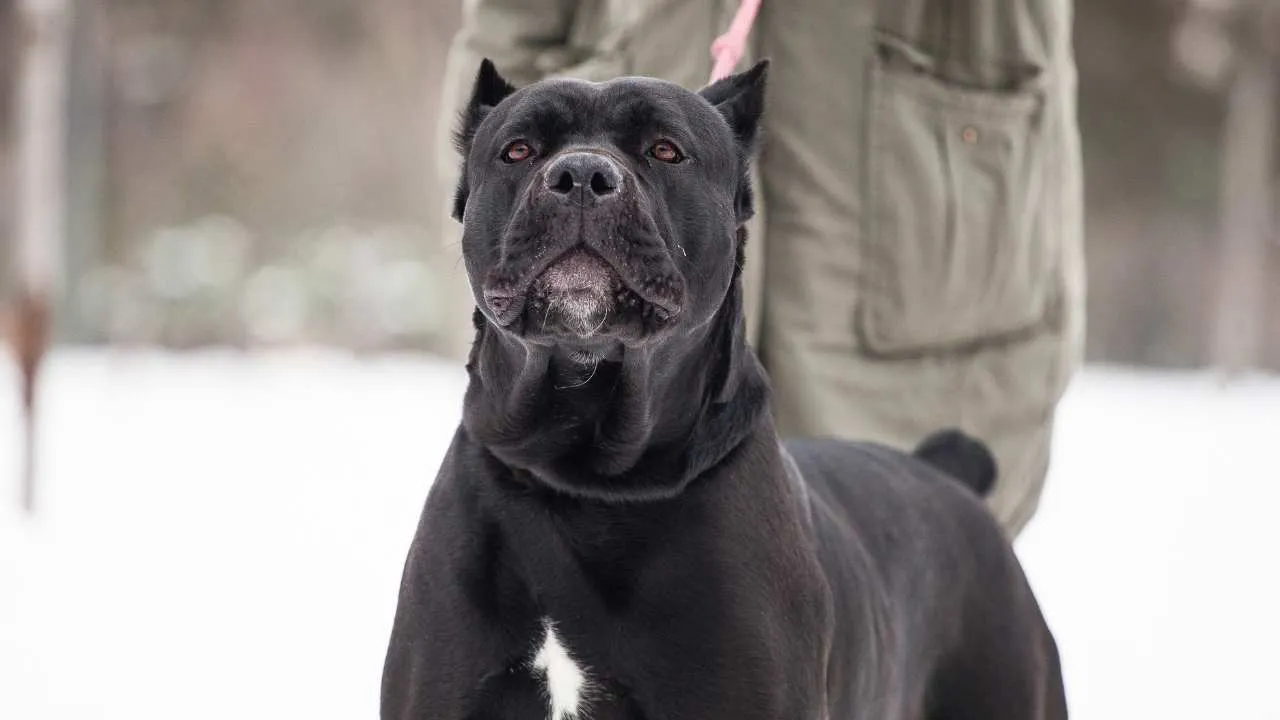
The Cane Corso is a bold, brainy guardian with deep roots in ancient Rome. Originally bred for protection and farm work, they combine strong instinct with sharp decision-making. Their intelligence leans practical—once they understand a command, they execute it with precision and confidence.
Corsi are quick learners who thrive on structure. They respect calm, assertive trainers who provide clear guidance and consistent boundaries. Because of their independent nature, early socialization and obedience are essential to channel their smarts constructively.
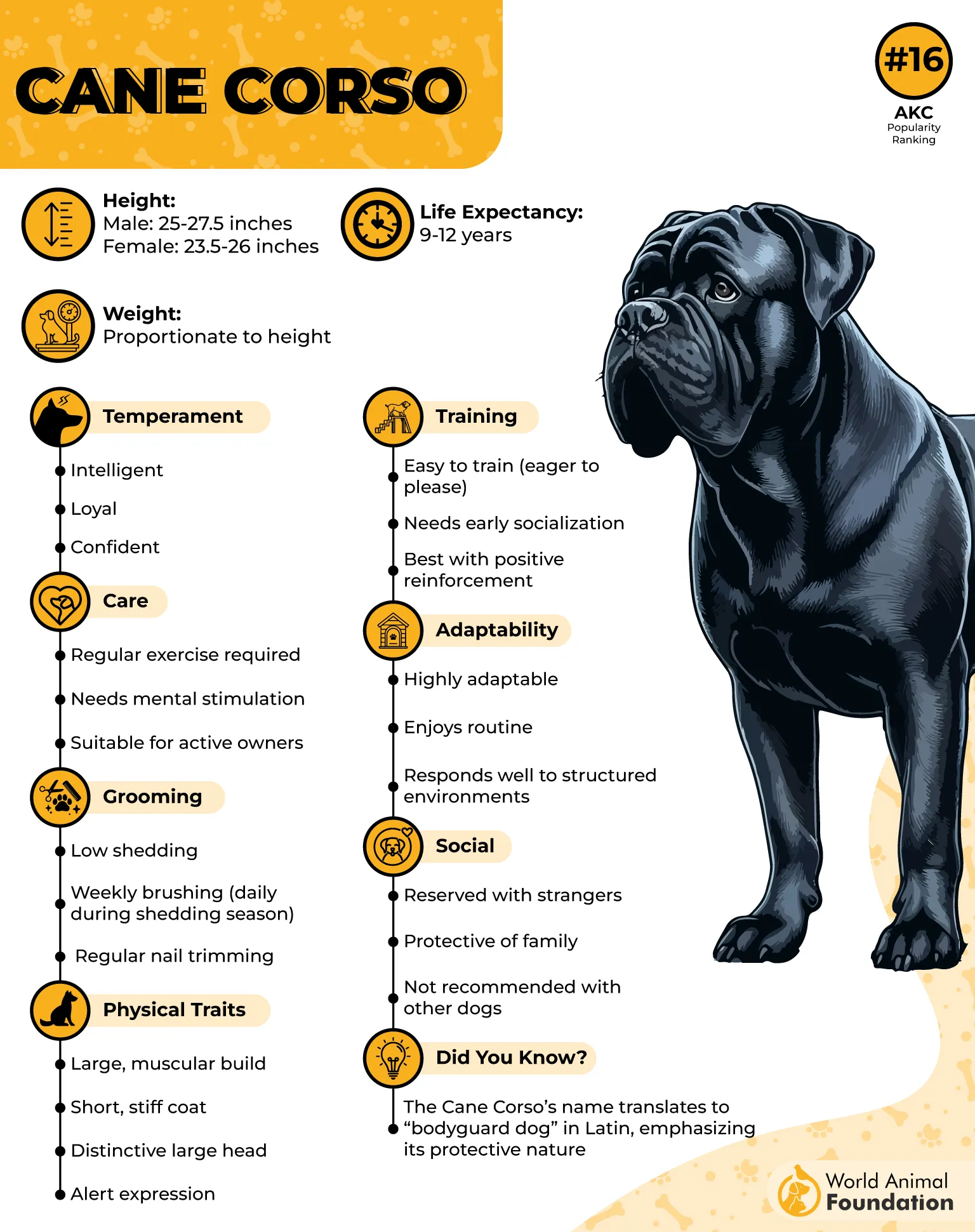
They’re not just obedient—they’re thinkers. Give them meaningful tasks like scent work or agility challenges to engage their minds. Without mental stimulation, boredom may lead to stubborn behavior, so variety keeps them sharp and satisfied.
Loyalty defines this breed. They’re deeply devoted to their families, reading moods and responding with protective care. Training becomes smoother when trust and respect are mutual, reinforcing their natural desire to please.
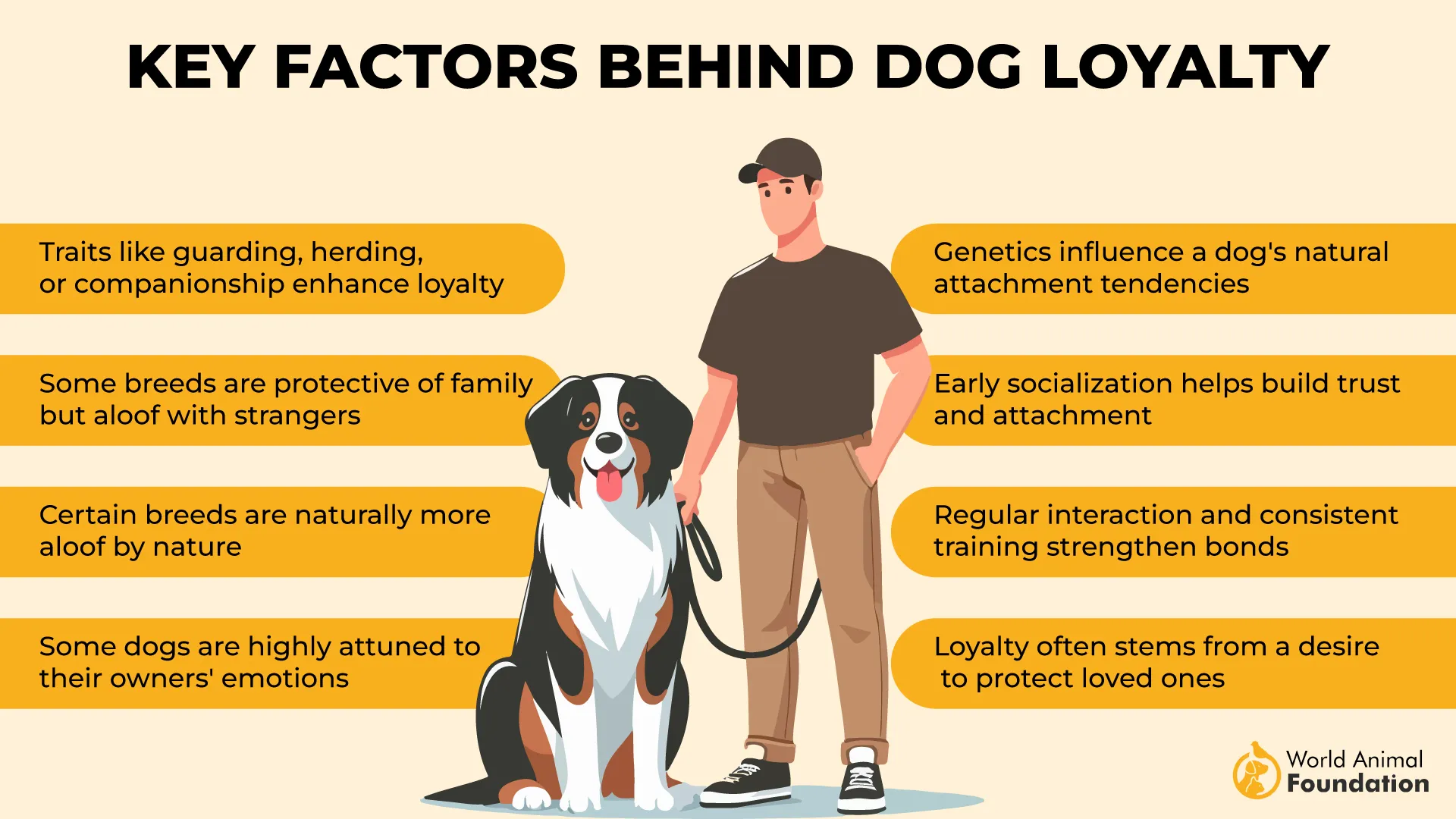
Handled with skill and positivity, the Cane Corso evolves into a disciplined, thoughtful partner. Their intelligence and intuition make them remarkable companions for experienced owners who appreciate a challenge.
Quick Tips
Establish firm but friendly boundaries from day one.
Include brain games and complex tasks in daily routines.
Keep lessons engaging—variety prevents stubbornness.
FAQs
1. Which giant dog breeds are considered the most intelligent?
Many giant breeds show keen intelligence, strong memory, and problem-solving skills. They quickly grasp new commands and enjoy structured obedience training when handled with patience and consistency.
2. Why does intelligence matter in training large dog breeds?
Smart, highly trainable dogs respond faster and retain lessons longer. Intelligence helps them stay calm, adapt to routines, and form strong bonds with families and other pets.
3. How can owners keep these smart giant dogs mentally stimulated?
Mix obedience training with fun challenges like scent games, puzzle toys, and herding-style tasks. Daily engagement keeps large dogs happy, energetic, and focused.
Conclusion
Intelligent giant breeds bring together size, heart, and sharp minds, making them excellent family pets for those who can offer structure, affection, and more space to roam. Their keen intelligence, calm demeanor, and protective nature make them great pets, powerful guardians, and extremely loyal companions. These highly intelligent, affectionate dogs thrive on obedience training, learning new commands, and bonding closely with children, other animals, and family members.
Other dog breeds such as German Shepherd, Border Collie, Golden Retrievers, Labrador Retriever, Doberman Pinscher, Standard Poodle, Irish Wolfhounds, Great Danes, Neapolitan Mastiff, and various herding dogs, hound, and terrier breeds are also known as some of the most intelligent breeds. They are highly trainable and excellent watchdogs, and yet they make outstanding family dogs known for their keen intelligence and loyal nature.


